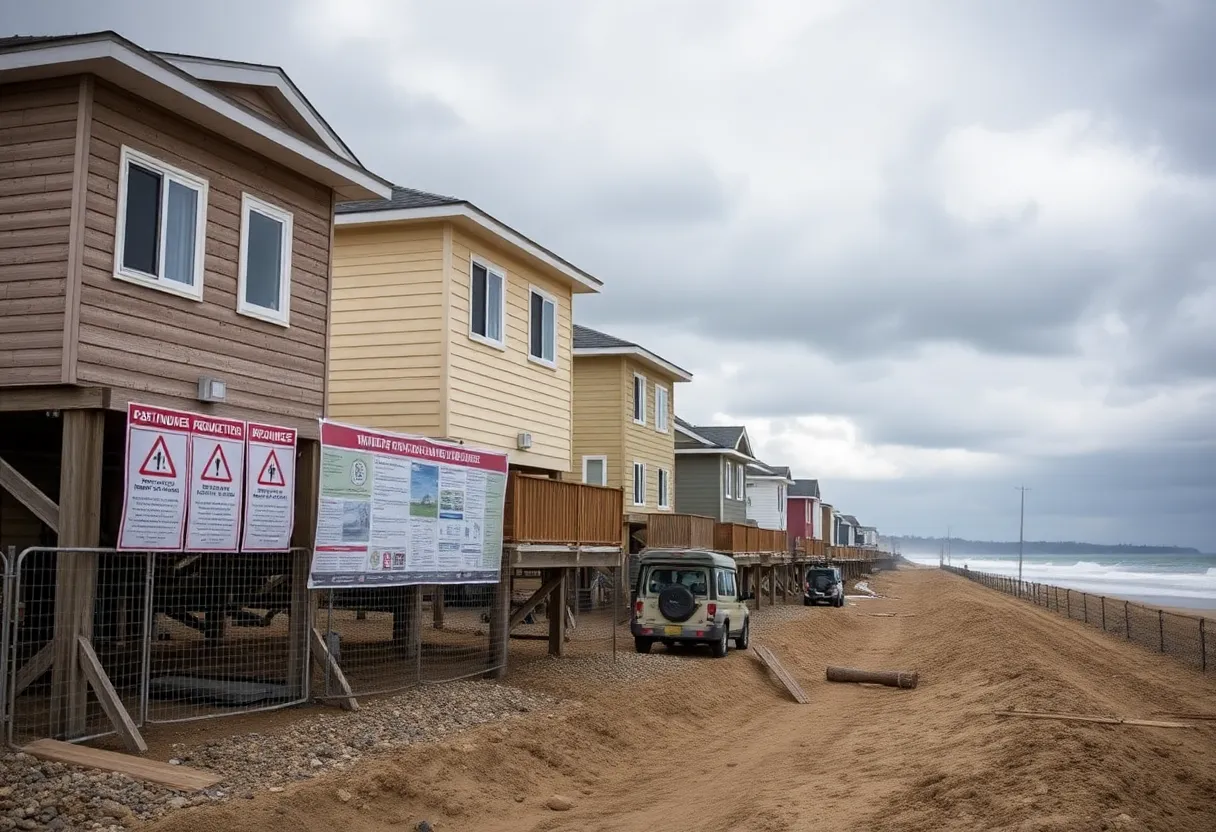News Summary
New Jersey environmental regulators have introduced construction regulations aimed at minimizing flood risks in vulnerable areas, especially along the Jersey Shore. The proposed changes include lowering the minimum height requirement for new constructions to 4 feet above FEMA’s Base Flood Elevation. This adjustment reflects updated climate data and aims to ensure safer and more affordable homes in coastal communities as sea levels rise. Critics raise concerns about expanded flood zones and potential construction costs. The new regulations will undergo public comment and evaluation every five years to adapt to changing climate conditions.
New Jersey Proposes Flood Construction Changes to Address Rising Risks
On July 14, 2025, New Jersey’s environmental regulators introduced new flood construction rules aimed at enhancing safety and affordability in flood-prone regions, particularly along the Jersey Shore. The proposed regulations suggest lowering the minimum elevation requirement for new buildings to 4 feet above the Federal Emergency Management Agency (FEMA) Base Flood Elevation. This marks a change from the initially proposed 5 feet, reflecting the latest scientific data on climate change and its potential impact on flooding.
Significant Adjustments Based on Recent Data
The new 4-foot elevation mandate is significant for prospective home builders and property developers. For instance, if FEMA’s base flood elevation for a property is determined to be 3 feet above ground level, homes constructed under the new guidelines would need to be built at least 7 feet above ground level. This adjustment comes amid forecasts predicting a sea-level rise of 4.4 feet by the end of this century, a decrease from an earlier estimate of 5.1 feet. Moreover, global temperature increases are now anticipated to be around 2.7 degrees Celsius, down from previous projections.
New Jersey’s building regulations are increasingly accounting for future scenarios regarding global temperatures, precipitation, and sea-level rise, contrasting with FEMA’s approaches, which primarily utilize historical flood data. Since the early 1900s, sea levels along New Jersey’s coastline have already increased by 18 inches, amplifying the urgency of revising construction regulations.
Implications of the Proposed Changes
While the proposed regulations aim to enhance safety and affordability, they have generated concerns among critics. These critics argue that the new rules could inadvertently extend flood zones into areas previously considered safe, leading to increased vulnerability for communities. There is also apprehension over provisions allowing hardship exceptions for low- and moderate-income housing projects, which could wave some building standards in flood-prone zones, raising questions about the safety of residents.
Furthermore, industry stakeholders, including the New Jersey Business & Industry Association, express concerns regarding affordability. They argue that even this minor reduction in elevation requirements could make housing projects unaffordable amid already challenging market conditions. The New Jersey Builders Association echoed the need for thorough examination of how these changes might impact planning, affordability, and the broader economy.
Moving Forward with Public Engagement
The proposal will be open for public feedback during a new 60-day comment period, with a public hearing scheduled for September. Changes are expected to be published in the New Jersey Register on July 21, 2025. It is important to note that the proposed regulations will not apply retroactively to existing buildings that are already correlating with instances of flooding.
Future Evaluations and Additional Measures
The regulations will be evaluated every five years to ensure they remain aligned with current climate data and projections. However, experts emphasize that simply raising building elevations is insufficient to tackle flooding comprehensively. The state is considering other critical measures, including improvements to existing stormwater drainage systems and collaboration on regional flood prevention projects.
Initiatives currently under consideration include dune replenishment, land buyouts in flood-prone areas, and various infrastructure upgrades aimed at better adapting to the challenges posed by climate change and rising water levels.
Deeper Dive: News & Info About This Topic
Additional Resources
- Construction Equipment Guide
- New Jersey Monitor
- Asbury Park Press
- Patch
- Ocean County Sentinel
- Wikipedia: Flood
- Google Search: flood regulations new jersey
- Google Scholar: new jersey flood construction regulations
- Encyclopedia Britannica: flooding
- Google News: new jersey construction flood
Author: Construction CA News
The CALIFORNIA STAFF WRITER represents the experienced team at constructioncanews.com, your go-to source for actionable local news and information in California and beyond. Specializing in "news you can use," we cover essential topics like product reviews for personal and business needs, local business directories, politics, real estate trends, neighborhood insights, and state news affecting the area—with deep expertise drawn from years of dedicated reporting and strong community input, including local press releases and business updates. We deliver top reporting on high-value events such as the Rose Parade, Coachella, Comic-Con, and the California State Fair. Our coverage extends to key organizations like the California Building Industry Association and Associated General Contractors of California, plus leading businesses in technology and entertainment that power the local economy such as Apple and Alphabet. As part of the broader network, including constructionnynews.com, constructiontxnews.com, and constructionflnews.com, we provide comprehensive, credible insights into the dynamic landscape across multiple states.




